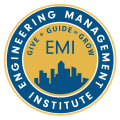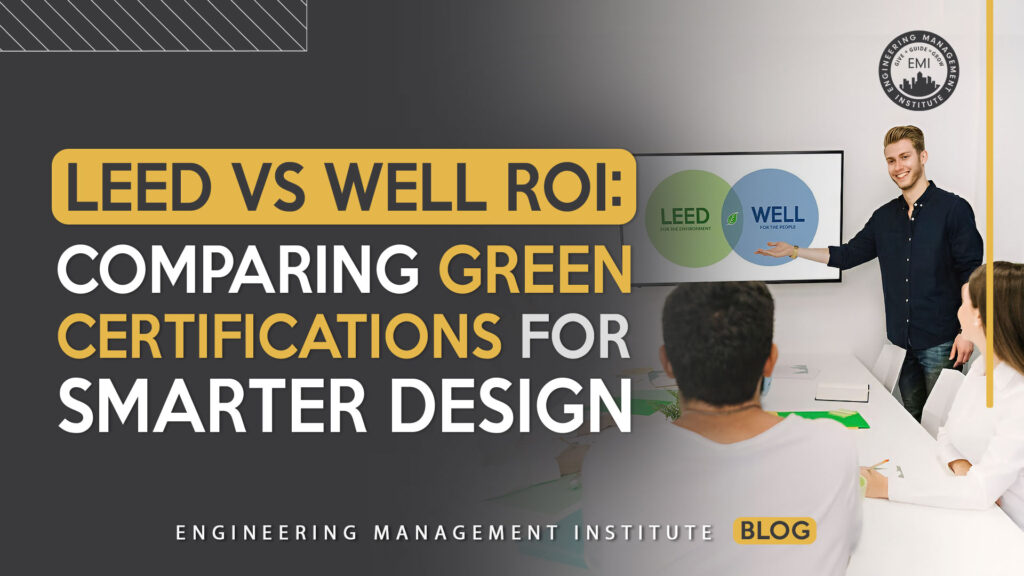If you’ve dipped your toes into sustainable building design, you’ve probably come across two heavyweights: LEED (Leadership in Energy and Environmental Design) and WELL Building Standards. On paper, they look like siblings. Both promise to improve sustainability, occupant well-being, and long-term performance. But when it comes to the all-important LEED vs WELL ROI — the reason your clients write the checks — which truly delivers the better bang for your buck?
I had the same question stuck in my head when helping to design an office building for a company that was obsessive about sustainability and keeping their employees happy (a rare breed). Let’s break this down with a real-world application in mind and a focus on sustainable building ROI.
LEED: The Energy-Efficiency Powerhouse
Focused Goals
LEED is your go-to if you love checking off efficiency boxes. Its primary aim: minimize environmental impact. That’s it. The energy and water usage benchmarks, waste reduction, and resource sourcing are precise. Achieving certification is all about measurable “green” outcomes. In any green building certifications comparison, LEED stands out for its focus on infrastructure and environmental metrics.
Economic ROI
What’s incredible about LEED is that you can quantify its ROI quickly. If your building slashes energy consumption by 25% to 30%, you cut major expenses annually. Even better? LEED-certified buildings often enjoy higher occupancy rates and market premiums (seriously, if you’re in commercial real estate, your tenants will pay more for bragging rights).
A Catch or Two
But — and it’s a big “but” — you have to commit upfront. Those systems that net you long-term savings (solar systems, triple-pane windows) might make the CFO wince during the design phase. LEED doesn’t actively prioritize occupant health, so focusing solely on LEED might leave those elements underdeveloped compared to WELL. This is where evaluating LEED WELL certification benefits become crucial.
WELL: Wellness-Driven Workspaces
What Makes WELL Different?
Unlike LEED, the WELL framework zooms in on human health and wellness. Think more about how your design impacts the lungs, minds, and productivity of the people spending time in the space. Air quality, lighting, ergonomics, and mental health matter here. WELL makes a strong case when exploring LEED vs WELL building design strategies focused on occupant well-being.
ROI for People-Centric Design
This was the “aha moment” for me during that office project. One WELL stat says occupant satisfaction (and productivity) improves drastically post-certification. Happier, healthier workers translate into fewer sick days and more engagement — that’s LEED vs WELL ROI most clients won’t notice upfront but cherish later.
Plus, a WELL-certified office is recruitment gold in companies competing for top talent. Who’d say no to ergonomic layouts and daylight-filled rooms that are supposed to reduce headaches?
Potential Drawback
Here’s the downside that’s often whispered behind closed doors: WELL doesn’t reduce running costs outright. If your client or company only sees sustainability as “energy savings,” WELL alone might be a hard sell. Also, it can feel subjective compared to LEED’s highly measurable benchmarks. What “optimal lighting” is to one designer might not be to another. That subjectivity is part of every green building certifications comparison.
The Overlap: LEED + WELL
You don’t have to choose one. Spoiler alert: combining both certifications creates the ultimate solution. LEED offers infrastructure efficiencies, while WELL focuses on fine-tuning the user experience. Together, they represent a holistic route to maximizing LEED vs WELL ROI.
Take the office project I worked on as an example. By integrating parts of both frameworks, we landed at a sweet spot. A LEED-friendly HVAC system cut our client’s running costs, while WELL’s air quality standards boosted the space’s “wellness factor.” Pairing WELL lighting setups with energy-efficient fixtures also balanced the upfront cost.
Wrapping It All Up: What’s the Better ROI?
The truthful answer: it depends on what your stakeholders prioritize.
- LEED has a better economic ROI if the goal is long-term cost savings and environmental performance.
- If they value human performance and talent attraction, WELL offers intangible ROI you can’t ignore in today’s talent-starved market.
For me, a hybrid LEED+WELL approach at scale delivers unmatched value (and happier clients). Once you get past the jargon, it’s all about balancing both sides of the sustainable building ROI equation. Green building isn’t just about saving Earth — it’s about building better lives and ledgers.
About the Author: Cris Mark Baroro

Sources
AEC PM Certification
AEC PM Connect
Project Management Accelerator™
Engineering Leadership Accelerator™
Keynote Speaking







